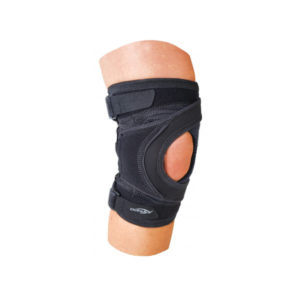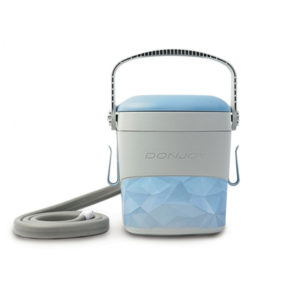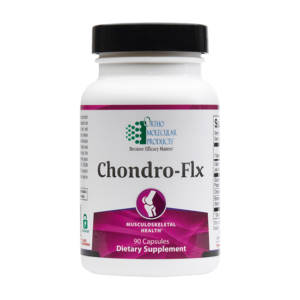Pain in the Butt Series 1: Piriformis Syndrome
“Pain in the butt,” a phrase that we typically use to describe someone or something that is very annoying, but it originated from a sensation of pain that is nagging, irritating, and directly affects our quality of life.
When evaluating patients who come in with the complaint of “a pain in the butt”, there are numerous things that can be causing their pain. Sometimes it is their hip, other times gluteal, or back pain. Sometimes it is nerve, muscle, ligament, and/or joint pain that is causing their discomfort. In this series of blogs I plan to tackle some of the various causes of pain I have seen and treated. This blog’s feature is: Piriformis Syndrome.
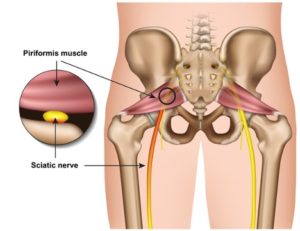
The piriformis is a muscle in the gluteal region that originates on the sacrum bone and travels across the gluteal region to insert on the hip. It functions as a hip external (lateral) rotator, notably externally rotating the femur with hip extension and abducting the femur with hip flexion. The significance of this muscle is it has the sciatic nerve directly beneath it as the nerve exits the pelvis and begins its journey down the leg. In a small number of people, the sciatic nerve also penetrates the piriformis.
When the piriformis gets injured it triggers up a natural inflammatory response. Normally this leads to normal tissue healing but occasionally it can cause a tethering of scar tissue from the piriformis to the sciatic nerve. Causes may include trauma to the gluteal muscle, spasms of the piriformis muscle, variations in the natural anatomy, or an overuse injury. When this happens, we call it “piriformis syndrome.”
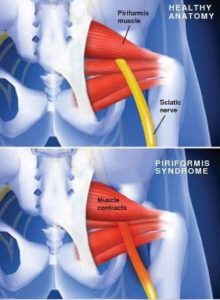 Piriformis syndrome can present as pain, numbness, and/or weakness that typically starts in the mid-buttock and radiates down the leg. Typically it will not radiate beyond the posterior knee in most cases. Often symptoms are worsened with sitting or running. The diagnosis is typically made on history and physical exam, although imaging with MRI or MSK US may be helpful, depending on the severity of the nerve irritation.
Piriformis syndrome can present as pain, numbness, and/or weakness that typically starts in the mid-buttock and radiates down the leg. Typically it will not radiate beyond the posterior knee in most cases. Often symptoms are worsened with sitting or running. The diagnosis is typically made on history and physical exam, although imaging with MRI or MSK US may be helpful, depending on the severity of the nerve irritation.
Treatment typically starts with proper stretching and strengthening exercises, physical therapy, and medications may help alleviate the pain. OMT is a manual treatment performed by DO’s that can be a helpful treatment to show the body how to heal itself. Ultrasound guided nerve hydrodissection is a often a definitive treatment for breaking up any scar tissue between the sciatic nerve and any surrounding adherent tissue as well as providing a solution that will help the nerve heal. Hydrodissection can be performed with various solutions, Dr. Clearfield most commonly uses D5 (dextrose at certain concentrations can calm down “neurogenic inflammation”) or high-dosed PRP.
Overall piriformis syndrome is a common, but very treatable, cause of a pain in the butt. Stay tuned for more of our “Pain in the Butt Series!”

